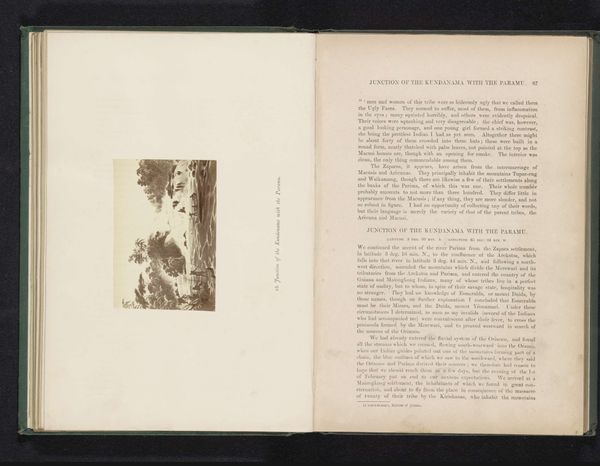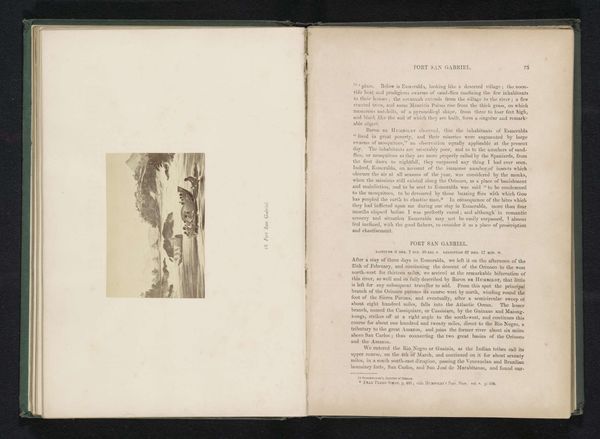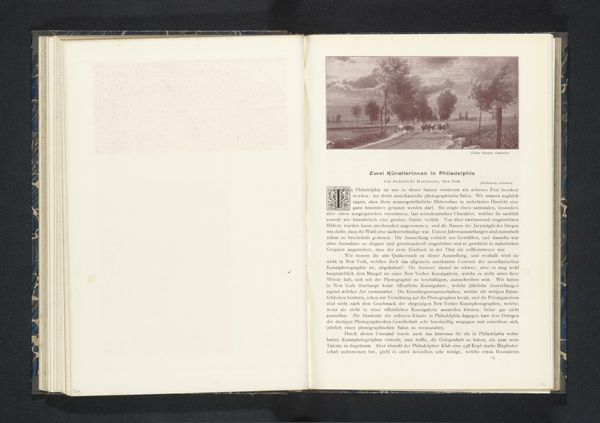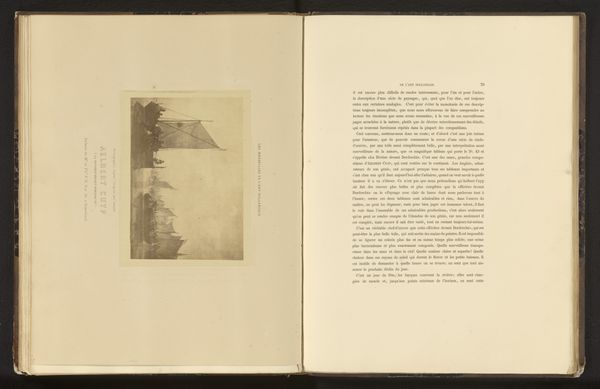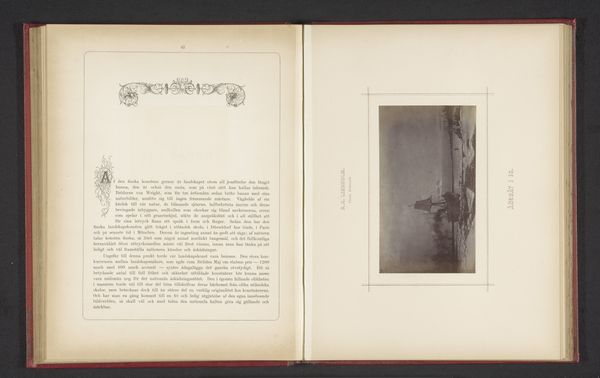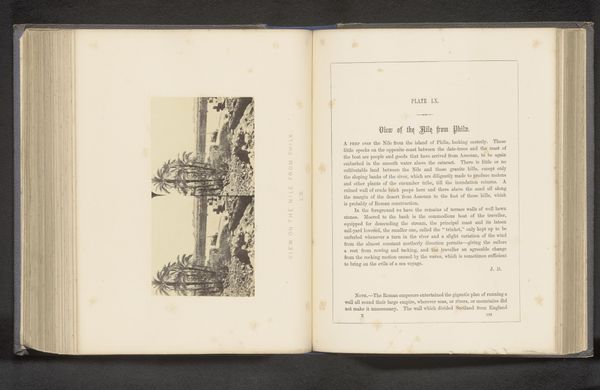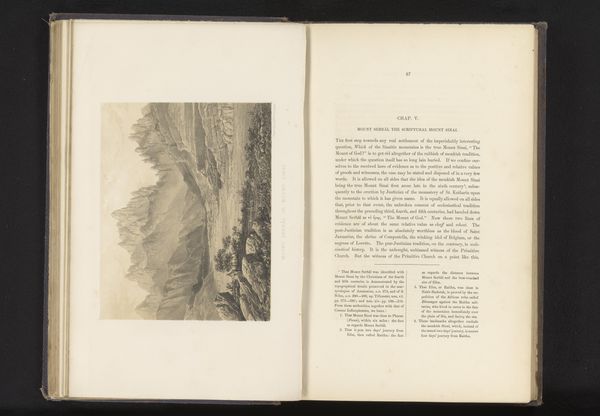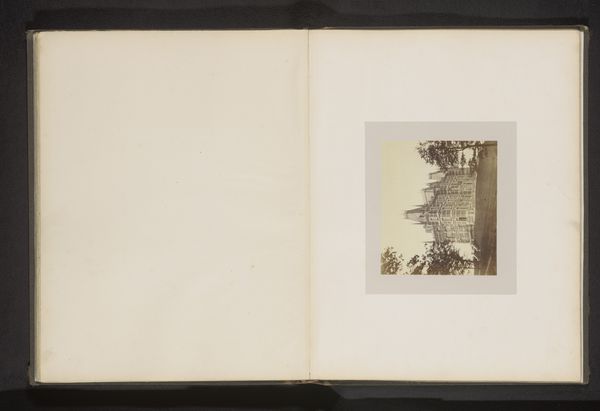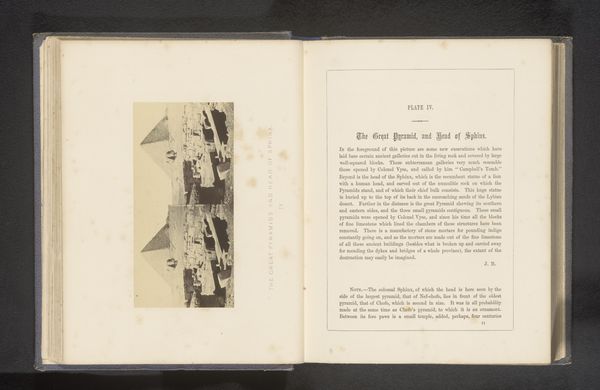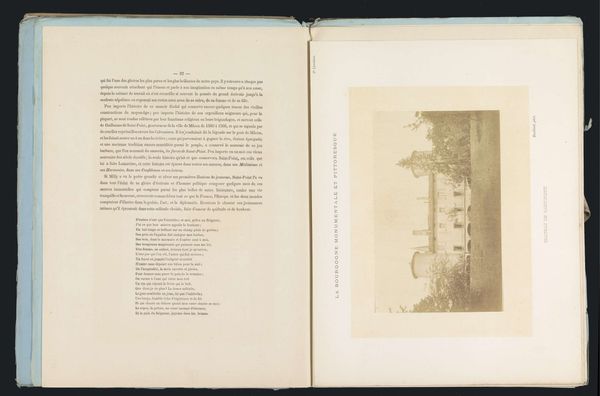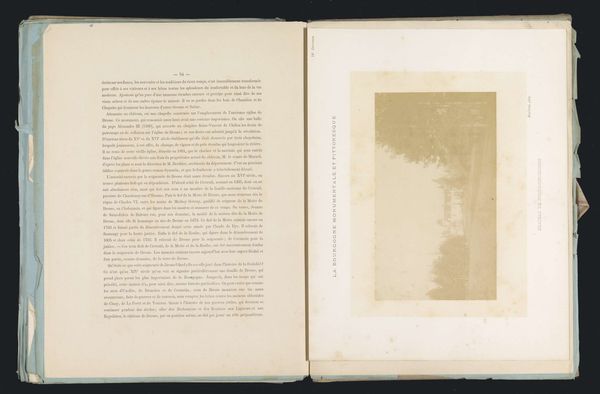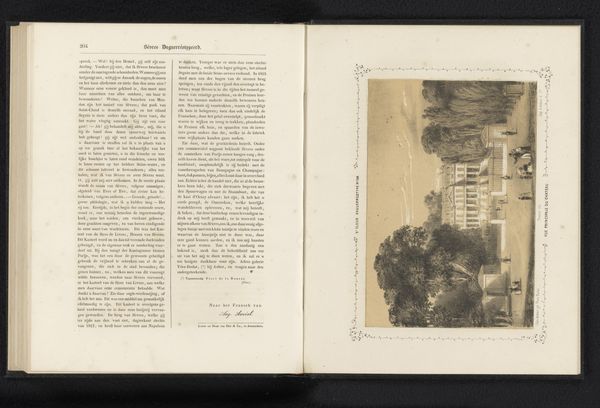
Fotoreproductie van een tekening van La Esmeralda aan de Orinoco-rivier before 1866
0:00
0:00
Dimensions: height 69 mm, width 102 mm
Copyright: Rijks Museum: Open Domain
Curator: We’re looking at an albumen print entitled "Fotoreproductie van een tekening van La Esmeralda aan de Orinoco-rivier," which translates to "Photographic Reproduction of a Drawing of La Esmeralda on the Orinoco River." It dates to before 1866 and is part of an album. Editor: It's so subtle, almost ethereal. The muted tones of the photograph, contrasted against the sharp text on the facing page, give it an air of quiet observation. The image itself feels like a memory fading. Curator: That's an interesting perspective. Thinking about it from a production standpoint, albumen prints were very popular at the time for their ability to render detail and subtle tonal variations. The materiality of the paper, the processing involved, all speak to a deliberate attempt to document, categorize, and preserve an image for dissemination. The craft and labour inherent in each stage seem at odds with your "fading memory" reading. Editor: Perhaps, but consider the context. Albums like this circulated among specific audiences. They shaped perceptions of foreign lands through curated imagery and accompanying text. There’s an element of control in how La Esmeralda and its inhabitants are presented – what stories are privileged, what voices are omitted. What labor produced the actual drawing which this photograph reproduces? Whose vision of this place are we ultimately seeing? Curator: Absolutely. The colonial gaze is unmistakable. But consider how the very act of reproduction alters the original drawing, layering another layer of mediation. The technical constraints of the photographic process at that time impacted not just its creation but its circulation and therefore reception as well. What sort of value do we place on material objects? Is it determined by process? Use? Art Historical reception? Editor: Precisely! And those questions ultimately shape what meaning we project onto these remnants of the past. It reminds us that images aren’t neutral reflections but rather deeply enmeshed in socio-political currents and the museum itself reinforces these curatorial trends! Curator: It shows just how much history is embedded in an object that might initially strike you as merely a fading memory. Editor: Indeed. There are so many perspectives we have not addressed in this short tour and one must always maintain the desire for greater critical examination of these historic reproductions.
Comments
No comments
Be the first to comment and join the conversation on the ultimate creative platform.
